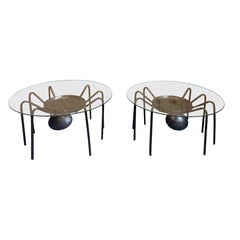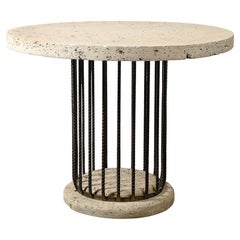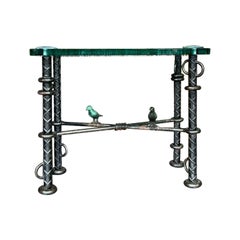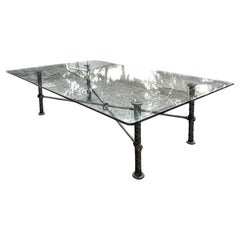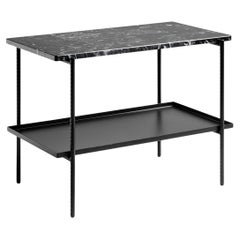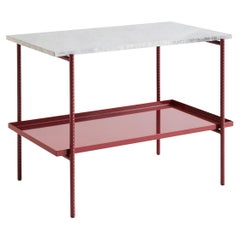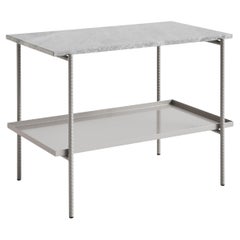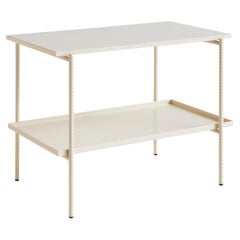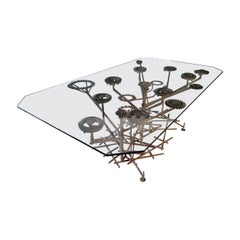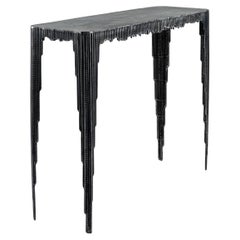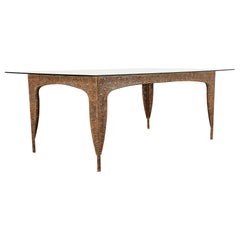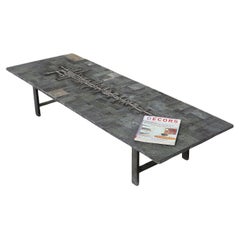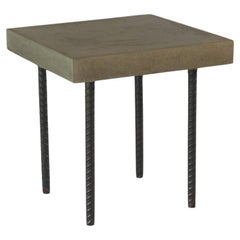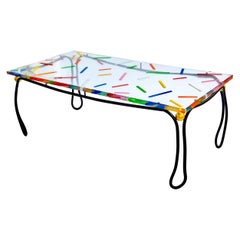Rebar Table
20th Century American Modern Tables
Iron, Wrought Iron
20th Century American Modern Dining Room Tables
Limestone
Late 20th Century American Industrial Side Tables
Bronze, Steel
Late 20th Century Mexican Industrial Coffee and Cocktail Tables
Metal
21st Century and Contemporary Chinese Scandinavian Modern Side Tables
Marble, Steel
21st Century and Contemporary Chinese Scandinavian Modern Side Tables
Marble, Steel
21st Century and Contemporary Chinese Scandinavian Modern Side Tables
Marble, Steel
21st Century and Contemporary Chinese Scandinavian Modern Side Tables
Marble, Steel
Vintage 1980s American Organic Modern Dining Room Tables
Steel
21st Century and Contemporary Dutch Arts and Crafts Console Tables
Metal, Steel
20th Century Post-Modern Dining Room Tables
Steel
Vintage 1960s Belgian Brutalist Coffee and Cocktail Tables
Slate, Steel
Late 20th Century American Industrial Patio and Garden Furniture
Concrete, Steel
Recent Sales
2010s Brutalist Coffee and Cocktail Tables
Concrete, Metal
21st Century and Contemporary Canadian Other Dining Room Tables
Steel
2010s Canadian Industrial Side Tables
Steel
2010s Canadian Industrial Side Tables
Steel
21st Century and Contemporary Canadian Other Side Tables
Steel
21st Century and Contemporary Canadian Other Side Tables
Steel
2010s Canadian Art Deco Desks and Writing Tables
Steel
21st Century and Contemporary Canadian Brutalist Coffee and Cocktail Tables
Steel
21st Century and Contemporary American Art Deco Bookcases
Brass, Stainless Steel
21st Century and Contemporary Canadian Art Deco Sideboards
Marble, Brass
Mid-20th Century American Side Tables
Iron
20th Century American Side Tables
Vintage 1980s American Rustic Dining Room Tables
Iron
Late 20th Century Israeli Carts and Bar Carts
Bronze
Late 20th Century American Tables
Stone
Vintage 1970s Belgian Brutalist Coffee and Cocktail Tables
Slate, Metal
Vintage 1960s Belgian Brutalist Coffee and Cocktail Tables
Stone, Slate, Steel
Late 20th Century Israeli Modern Dining Room Sets
Iron
Late 20th Century Israeli Coffee and Cocktail Tables
Bronze, Iron
Mid-20th Century Israeli Mid-Century Modern Coffee and Cocktail Tables
Bronze, Steel
Late 20th Century American Craftsman Dining Room Tables
Late 20th Century American Mid-Century Modern Console Tables
Late 20th Century Israeli Coffee and Cocktail Tables
Iron
1990s American Post-Modern Side Tables
Marble, Steel
1990s American Post-Modern Side Tables
Marble, Steel
Vintage 1970s American Coffee and Cocktail Tables
Steel
Vintage 1980s Israeli Modern Console Tables
Marble, Iron
People Also Browsed
Vintage 1950s French Mid-Century Modern Wall Lights and Sconces
Plaster
2010s Danish Scandinavian Modern Dining Room Chairs
Oak
2010s Dutch Modern Wall Lights and Sconces
Brass
21st Century and Contemporary Portuguese Modern Sofas
Velvet, Walnut
21st Century and Contemporary European Neoclassical Benches
Iron
2010s American Flush Mount
Brass
2010s South African Minimalist Pedestals
Burl, Poplar, Wood
Vintage 1950s Persian Tribal Persian Rugs
Wool
21st Century and Contemporary French Post-Modern Chandeliers and Pendants
Metal
2010s Italian Mid-Century Modern Wall Lights and Sconces
Brass
21st Century and Contemporary Italian Chandeliers and Pendants
Brass
2010s North American Beds and Bed Frames
Cotton
2010s Wall Lights and Sconces
Aluminum, Steel
Vintage 1960s American Mid-Century Modern Desks and Writing Tables
Brass
2010s Italian Modern Dining Room Chairs
Chrome
21st Century and Contemporary Portuguese Modern Wall Mirrors
Mirror, Oak
Rebar Table For Sale on 1stDibs
How Much is a Rebar Table?
Finding the Right Tables for You
The right vintage, new or antique tables can help make any space in your home stand out.
Over the years, the variety of tables available to us, as well as our specific needs for said tables, has broadened. Today, with all manner of these must-have furnishings differing in shape, material and style, any dining room table can shine just as brightly as the guests who gather around it.
Remember, when shopping for a dining table, it must fit your dining area, and you need to account for space around the table too — think outside the box, as an oval dining table may work for tighter spaces. Alternatively, if you’ve got the room, a Regency-style dining table can elevate any formal occasion at mealtime.
Innovative furniture makers and designers have also redefined what a table can be. Whether it’s an unconventional Ping-Pong table, a brass side table to display your treasured collectibles or a Louis Vuitton steamer trunk to add an air of nostalgia to your loft, your table can say a lot about you.
The visionary work of French designer Xavier Lavergne, for example, includes tables that draw on the forms of celestial bodies as often as they do aquatic creatures or fossils. Elsewhere, Italian architect Gae Aulenti, who looked to Roman architecture in crafting her stately Jumbo coffee table, created clever glass-topped mobile coffee tables that move on bicycle tires or sculpted wood wheels for Fontana Arte.
Coffee and cocktail tables can serve as a room’s centerpiece with attention-grabbing details and colors. Glass varieties will keep your hardwood flooring and dazzling area rugs on display, while a marble or stone coffee table in a modern interior can showcase your prized art books and decorative objects. A unique vintage desk or writing table can bring sophistication and even a bit of spice to your work life.
No matter your desired form or function, a quality table for your living space is a sound investment. On 1stDibs, browse a collection of vintage, new and antique bedside tables, mid-century end tables and more .
Read More
20 Inviting Dining Rooms Perfectly Arranged for Entertaining
Top interior designers show — and tell — us how to create delectable spaces for hosting dinner parties.
This Alain Delon–Designed Table Is Almost as Handsome as He Was
Fans of the French film star may be surprised to learn that he had a flair for furniture with sleek lines and disco-era flash.
Uchronia’s Plant Stand Gives Pots a Pretty Perch with All the Trimmings
Like other pieces in the firm’s Candy Box collection, the cheerful limited-edition design showcases French craft.
The Ultimate Guide to Types of Tables for the Home
Whether you’re just moving in or ready to give your home a makeover, our guide will give you pointers on tables that are fitting for every room, nook and hallway.
Is Lionel Jadot the Willy Wonka of Upcycled Belgian Design?
From his massive collaborative workshop in a former paper factory, the designer concocts funky furniture from disused materials, as well as luxe hotel interiors like the new Mix Brussels.
Inspired by the Cosmos, Sandra Nunnerley’s Nova Table Has a Futuristic Feel
The designer’s innovative use of an unexpected material gives this console a lift.
This 19th-Century Gilded Desk Displays a Fanciful Kingdom in Marquetry
The stately piece brings both gravitas and whimsy to any work space.
In Guadalajara, These Luscious Side Tables Are Chiseled from Volcanic Rock
Use them as tables or stools, indoors or out.
